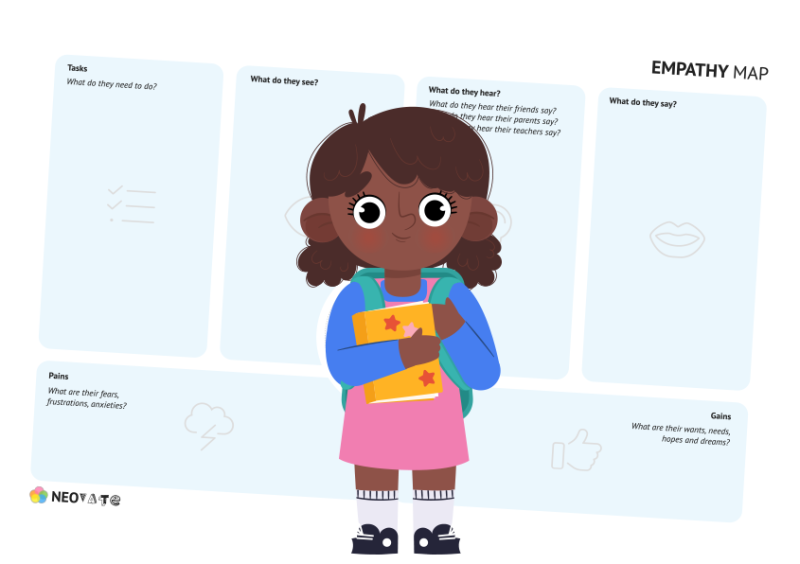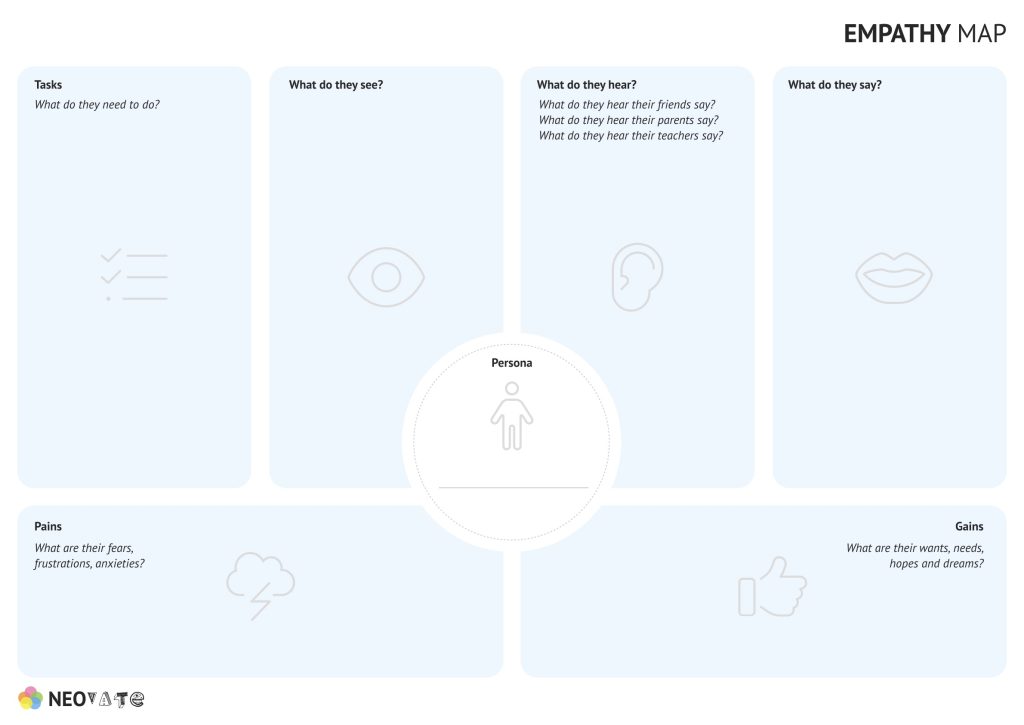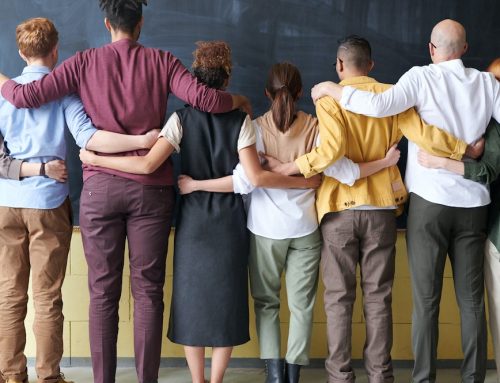Empathy maps — School edition
A deep dive into the canvas that puts you in other people’s shoes

Empathy maps are a powerful tool for understanding and relating to others, and they can absolutely be used with students in grades K-12. But what exactly is an empathy map, and how can it be leveraged in the classroom?
An empathy map is a visual representation of someone else’s thoughts, feelings, behaviours, and needs. By creating an empathy map, we can gain a deeper understanding of the perspectives and experiences of others, and use this understanding to build stronger relationships and communicate more effectively.
Empathy maps are usually used in research phases, and work particularly well with observation. How can empathy maps be used for innovation in the classroom?
Persona-driven or not?
Depending on the context, you may want to explore empathy maps for defined personas. For example if we’re reinventing parent-teacher meetings, it is preferable to have at least one map for parents and one for teachers. They will have different experiences, pains and gains altogether.
In other circumstances, we might not yet know what the personas will be. In that case the empathy map might actually participate to identifying personas. For example if we’re reinventing the playground experience, we might have different empathy maps by personality type or age group.
Don’t forget research is iterative, so we learn as we go, and we grow as we learn!
Ready to go? There are 2 main ways you can complete the canvas:
1. In situ
Okay, we are talking about field studies, which means we’re actually getting out of the classroom! What better way to understand a problem than to walk in the shoes of the users. As students immerse themselves in the field, they can capture what people think, say, hear, etc… by taking or recording notes. They can complete the empathy map after the study, with the help of their notes.
2. In a group activity
Another way to complete empathy maps is in a collaborative workshop.
Split the class into groups.
If persona-based, let each group work on a persona.
Alternatively, all groups can work on the same persona.
Using the ‘work alone together‘ technique, each participant silently captures their thoughts or observations on post it notes. The teacher will take the group through each one of the sections and students can share their ideas one after the other.
Tip: To avoid too long a workshop, group the notes by theme as you go.
For each group, have a spokesperson present their empathy maps with the class and discuss their perspectives and experiences.
Incorporating empathy maps into your K-12 classroom can be a fun and engaging way to help students develop empathy, understand and relate to others, and build stronger relationships. So, why not give it a try and see the impact it can have on your students and your classroom community!

Get weekly education innovation insights in your inbox.




